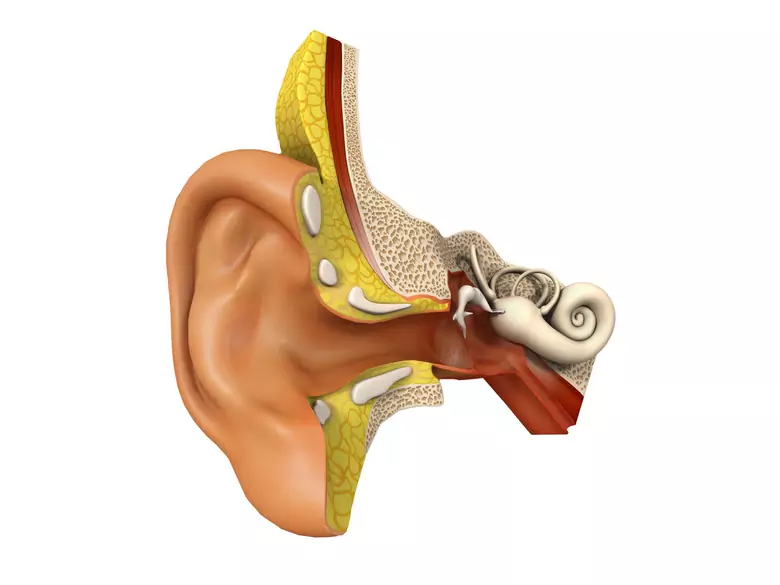Is your child constantly turning down the TV? Do you have to repeat what you say to him because he doesn't respond? Your toddler may be experiencing hearing problems due to an overgrowth of the pharyngeal tonsil.
Mum, make it louder!
One of the symptoms of hypertrophy of the pharyngeal tonsil is hearing loss. "Located in the nasopharynx, the enlarged tonsil blocks the outlet of the so-called Eustachian tube, or 'duct', which connects the eardrum and the throat. This prevents it from functioning properly, i.e. equalising the pressure difference on both sides of the eardrum - inside and outside. The normalisation of pressure is essential for the correct mobility of the ossicles, which conduct sounds to the hearing organ," explains Dr Agnieszka Strzembosz, ENT doctor. It is the Eustachian tube that makes the unpleasant sensation of the 'fullness' of the ear disappear, accompanying us for example during a take-off or landing of an aeroplane, or while riding a fast lift up to a high floor.
My ear hurts again
An enlarged tonsil is sometimes a cluster of pathogenic bacteria that cause infection of the upper respiratory tract, including the middle ear. On the other hand, obstruction of the Eustachian tube, caused by an oversized tonsil, prevents adequate ventilation of the eardrum cavity. This leads to an accumulation of fluid, which in turn can result in exudative and exudative-inflammatory otitis. "According to recent scientific reports, the composition of the air in the eardrum cavity is also altered in this way - above all, the level of nitric oxide, which plays an important antibacterial role, decreases," adds Dr Strzembosz.
Snoring
An enlarged pharyngeal tonsil also interferes with the free flow of air through the nose, resulting in vibrations of the soft palate. These vibrations cause the snoring sound. So, if you notice that your child sleeps restlessly, snores, his or her pyjamas are damp with sweat, wakes up with a cough or coughs while sleeping, complains of headaches in the morning, and has a runny nose and talks "through the nose" for weeks, sometimes months, this is a signal that you should see an otolaryngologist as soon as possible.
A visit to the otolaryngologist
During the consultation, the doctor will examine the tonsils and ears and determine the indications for treatment. The examination is not painful, but it can be unpleasant if it is palpated, i.e. by touch. The doctor then assesses the tonsil by putting his or her finger in the child's mouth, and this causes a vomiting reflex. However, this type of examination is carried out less and less frequently. "Nowadays, nasopharyngeal fibroscopy - a much more accurate and less invasive examination - is used more frequently. They are performed under local anaesthesia of the nasal mucosa, which avoids the unpleasant vomiting reflex for the child. The toddler's ears, on the other hand, are examined using a videotoscope or microscope to check whether exudate has accumulated in the eardrum cavity," explains Dr Strzembosz. If the ENT specialist finds the presence of an exudate, it is necessary to implement conservative treatment usually supplemented by surgical treatment, i.e. surgical removal of the pharyngeal tonsil.
What kind of surgery is it?
"Adenotomy, also known as adenoidectomy, involves the complete excision of the tonsil from the nasopharynx. Often a tympanotomy is also performed, which is the removal of inflammatory lesions in the tympanic cavity and the insertion of a ventilation drain. Such a tiny drain resembles a micro thread spool. One of its flanges is on the side of the eardrum cavity and the other is on the outside, on the side of the ear canal. The drains provide adequate air access to the middle ear and cause the inflammatory lesions to withdraw. Tympanotomy is performed under an operating microscope," describes Dr Strzembosz.
Before the procedure
For the excision of the tonsil, it is of course necessary to prepare properly. The paediatrician must carefully assess the general health of the toddler. A blood count is necessary, including an evaluation of the coagulation system and determination of the blood group. In addition, if the child is under the care of a specialist, e.g. a cardiologist or pulmonologist, their opinion on anaesthesia will be required - an indication (or contraindication) to anaesthesia. One last important point - good health. The toddler must have been completely healthy for a minimum of two weeks.









